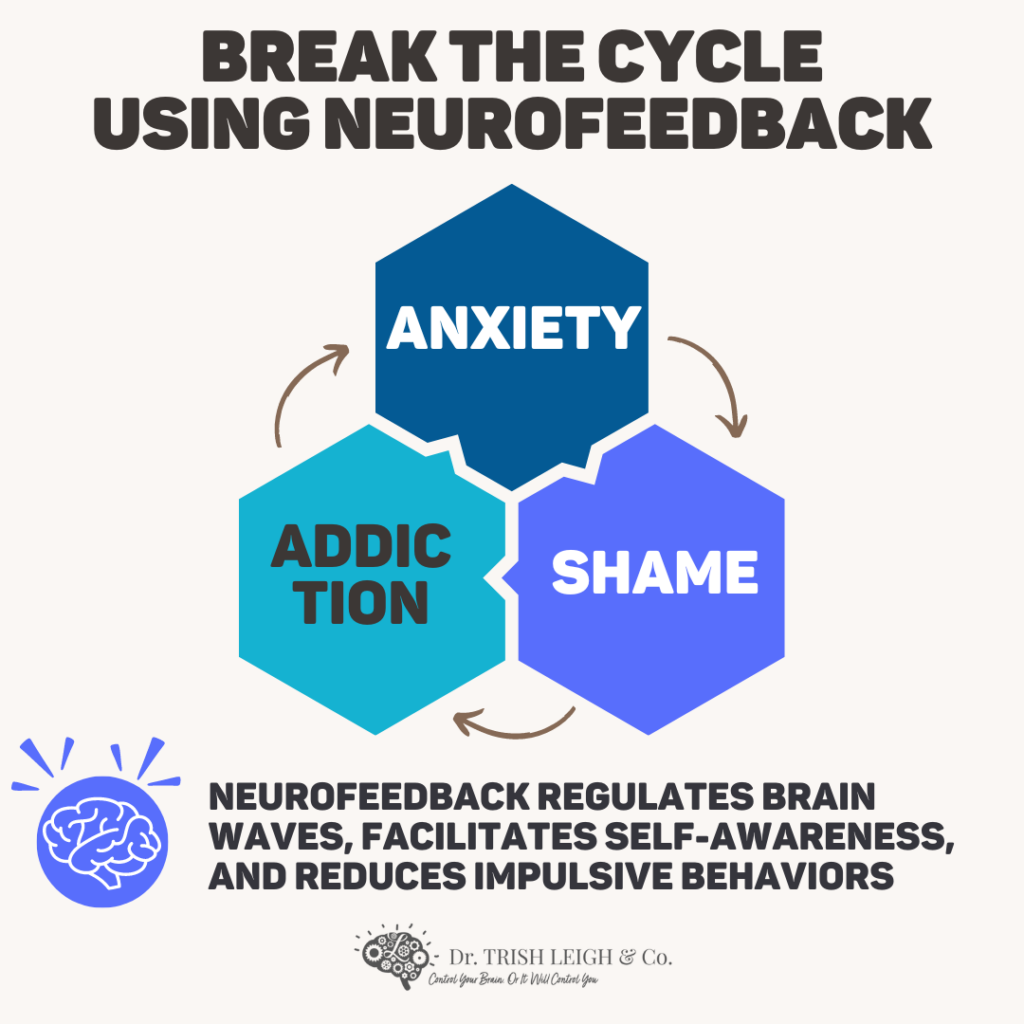Anxiety, Shame, and Internet Addiction, and How Neurofeedback Can Help
In an era defined by constant connectivity, the intersection of anxiety, shame, and internet addiction has become a prevalent and challenging aspect of many lives. This blog post delves into the intricate relationship between these elements and explores the transformative potential of neurofeedback in breaking free from their clutches.
The Web of Anxiety, Shame, and Internet Addiction:
1. Anxiety as the Catalyst:
Anxiety often serves as the catalyst, triggered by the pressures of modern life, societal expectations, and the comparison culture perpetuated on social media platforms. The constant fear of falling short or not measuring up can lead to a heightened sense of unease.
2. Shame as the Silent Strangler:
Anxiety’s close companion, shame, tends to emerge from a perceived failure to meet expectations or a fear of judgment. Social media, in particular, can amplify feelings of shame, as individuals curate and present idealized versions of their lives, creating unrealistic standards.
3. Internet Addiction as the Coping Mechanism:
In the face of anxiety and shame, internet addiction often emerges as a coping mechanism—a refuge offering distraction, validation, or an illusion of connection. The constant scroll, click, and refresh provide temporary relief from internal struggles.

How Neurofeedback Unravels the Web:
1. Understanding Neurofeedback:
Neurofeedback is a therapeutic technique that involves real-time monitoring of brainwave activity, providing individuals with insights into their neural patterns. This non-invasive process helps in understanding and regulating brain function.
2. Targeting Anxiety at its Core:
Neurofeedback addresses anxiety by training individuals to regulate their brainwaves, leading to a more balanced and relaxed mental state. By targeting the neural pathways associated with anxiety, it offers a unique and personalized approach to managing this emotion.
3. Breaking the Cycle of Shame:
Shame often thrives in the shadows of unspoken thoughts and unexplored emotions. Neurofeedback facilitates self-awareness, letting individuals to confront and process shame-inducing thoughts. As neural pathways shift, a healthier self-perception can emerge.
4. Reclaiming Control from Internet Addiction:
Neurofeedback aids in rewiring the brain’s reward system, reducing impulsive behaviors associated with internet addiction. By promoting self-regulation and attention control, individuals can gradually reclaim control over their online habits.
5. Enhancing Emotional Regulation:
A key strength of neurofeedback lies in its capacity to enhance emotional regulation. By training the brain to respond better to stress, it equips individuals with the tools to navigate anxiety-inducing situations without resorting to compulsive internet use.
Conclusion:
The connection between anxiety, shame, and internet addiction forms a complex web that can ensnare individuals in a cycle of stress. However, the innovative approach of neurofeedback offers a promising path to liberation. By focusing on the root causes at the neural level, neurofeedback empowers individuals to untangle themselves from the web, fostering a journey towards better mental health and a better relationship with both themselves and the digital world.


